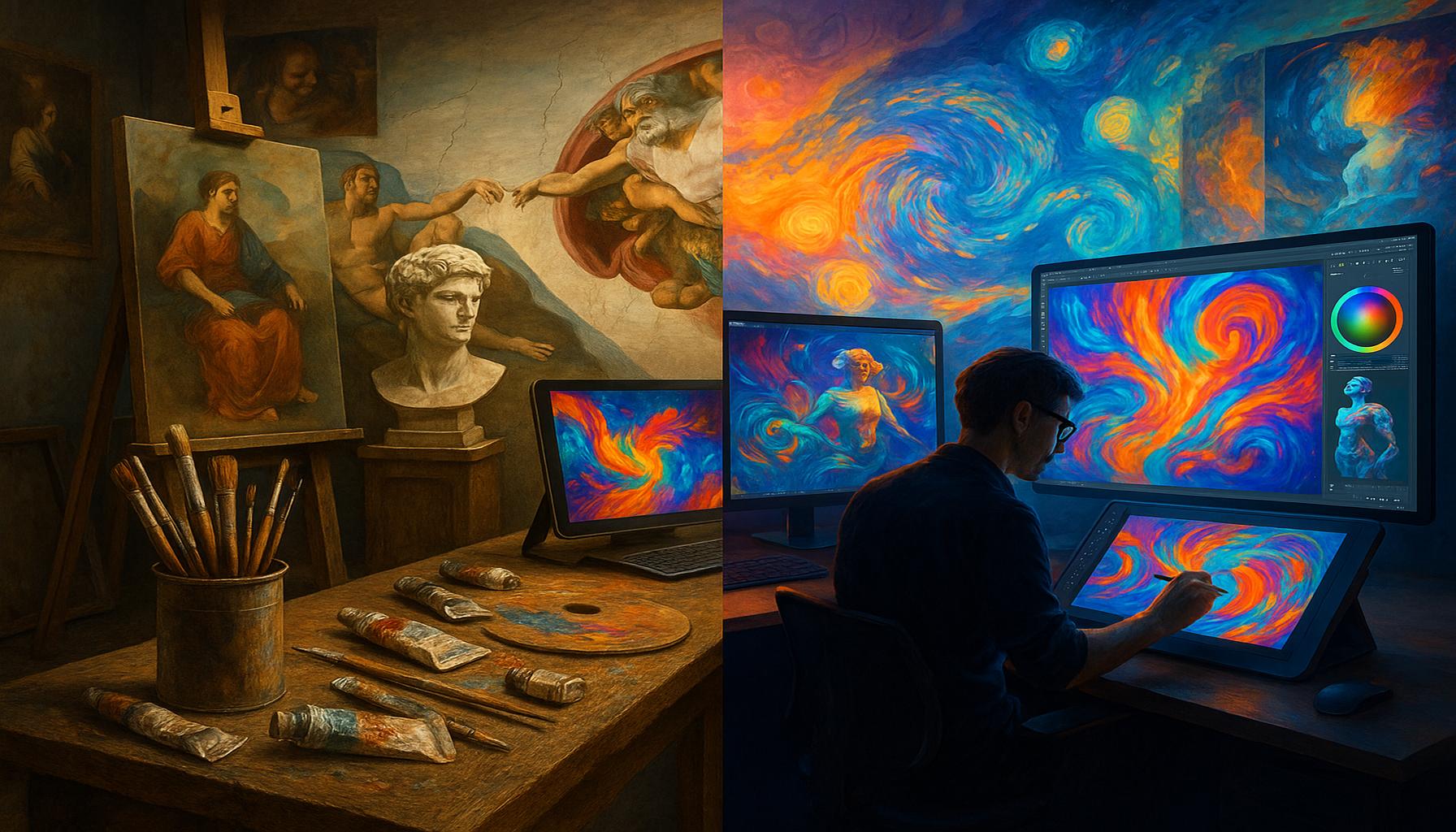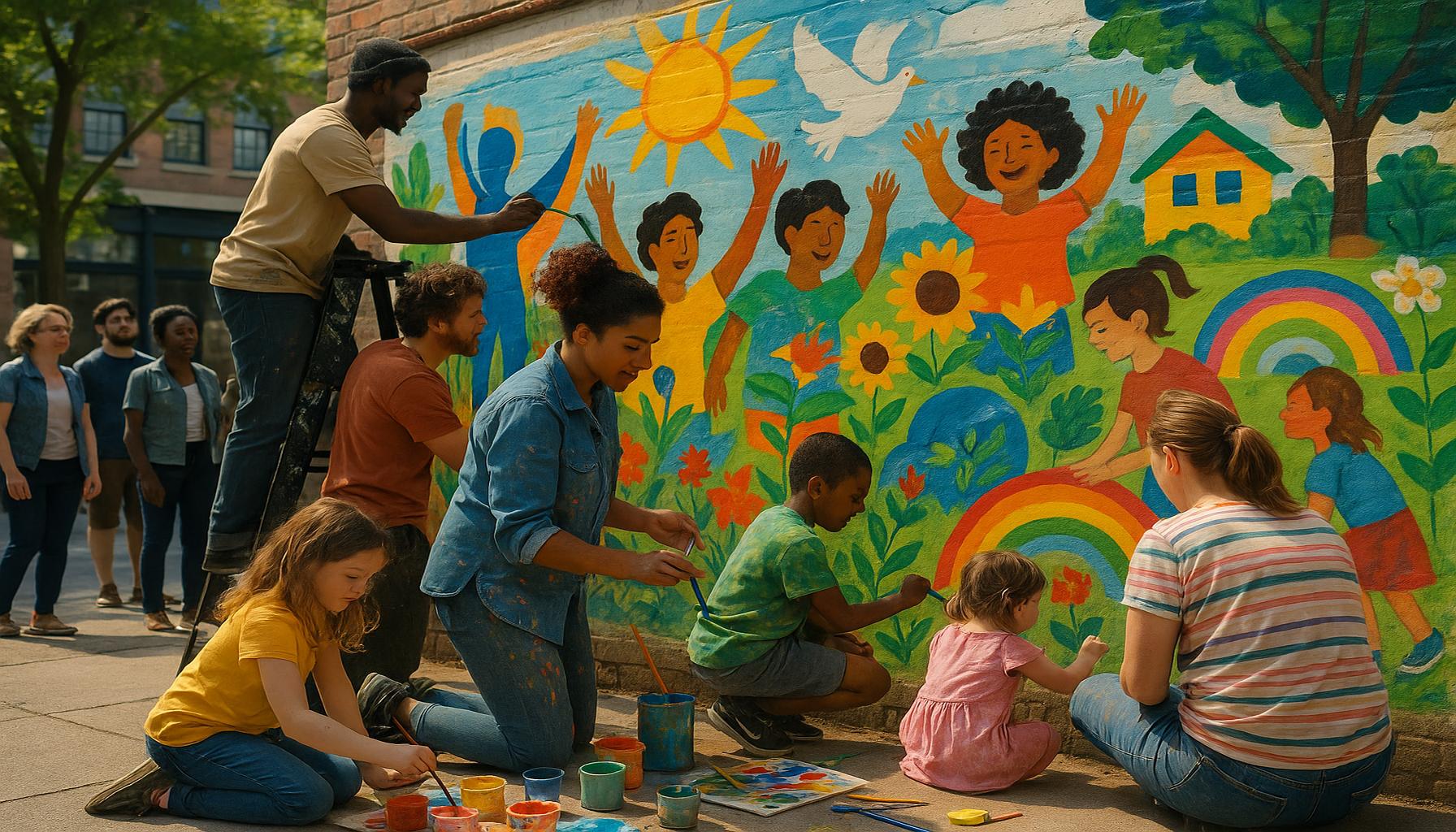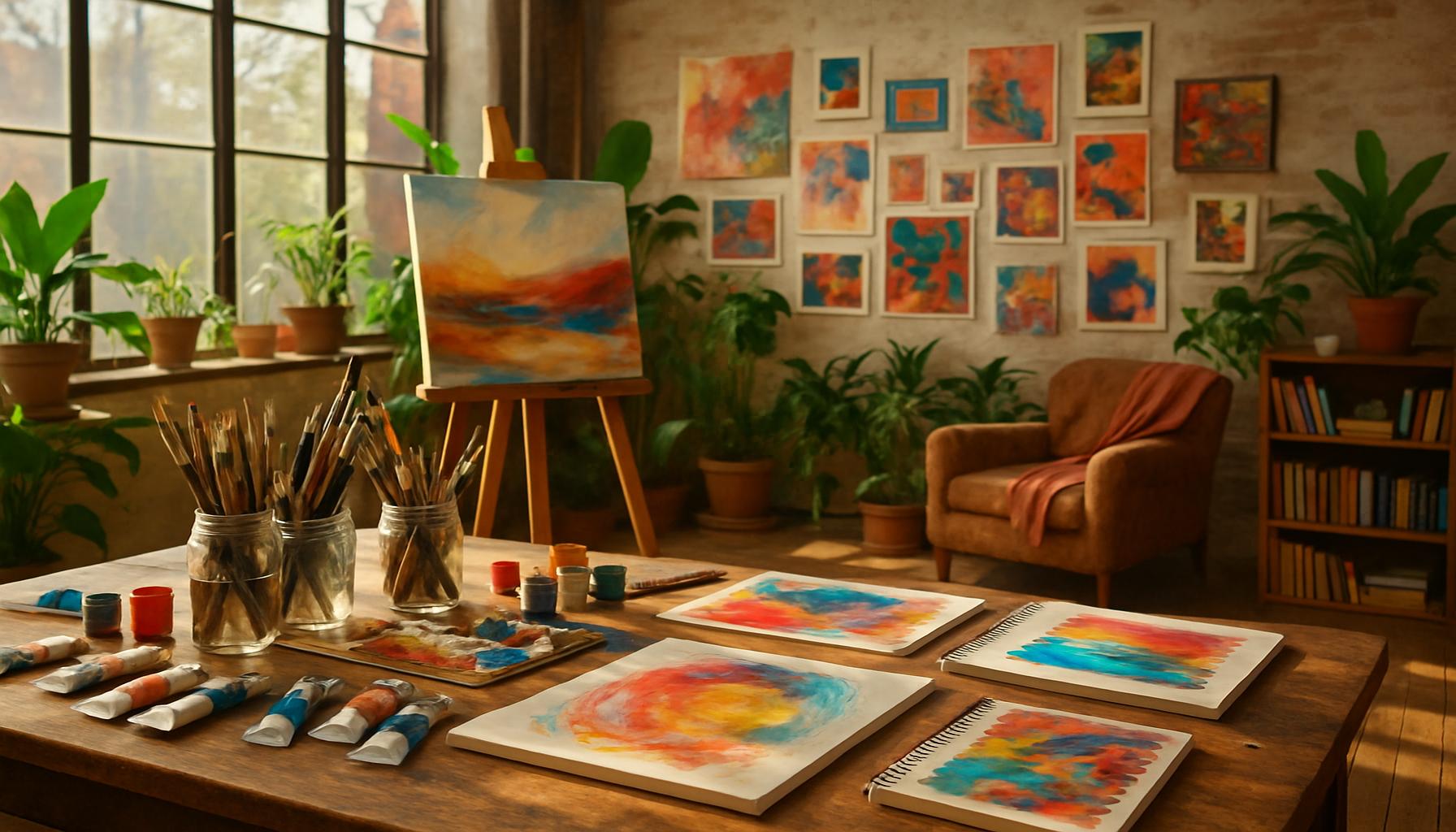The Role of Art in Education: How Artistry Can Enrich Teaching and Learning
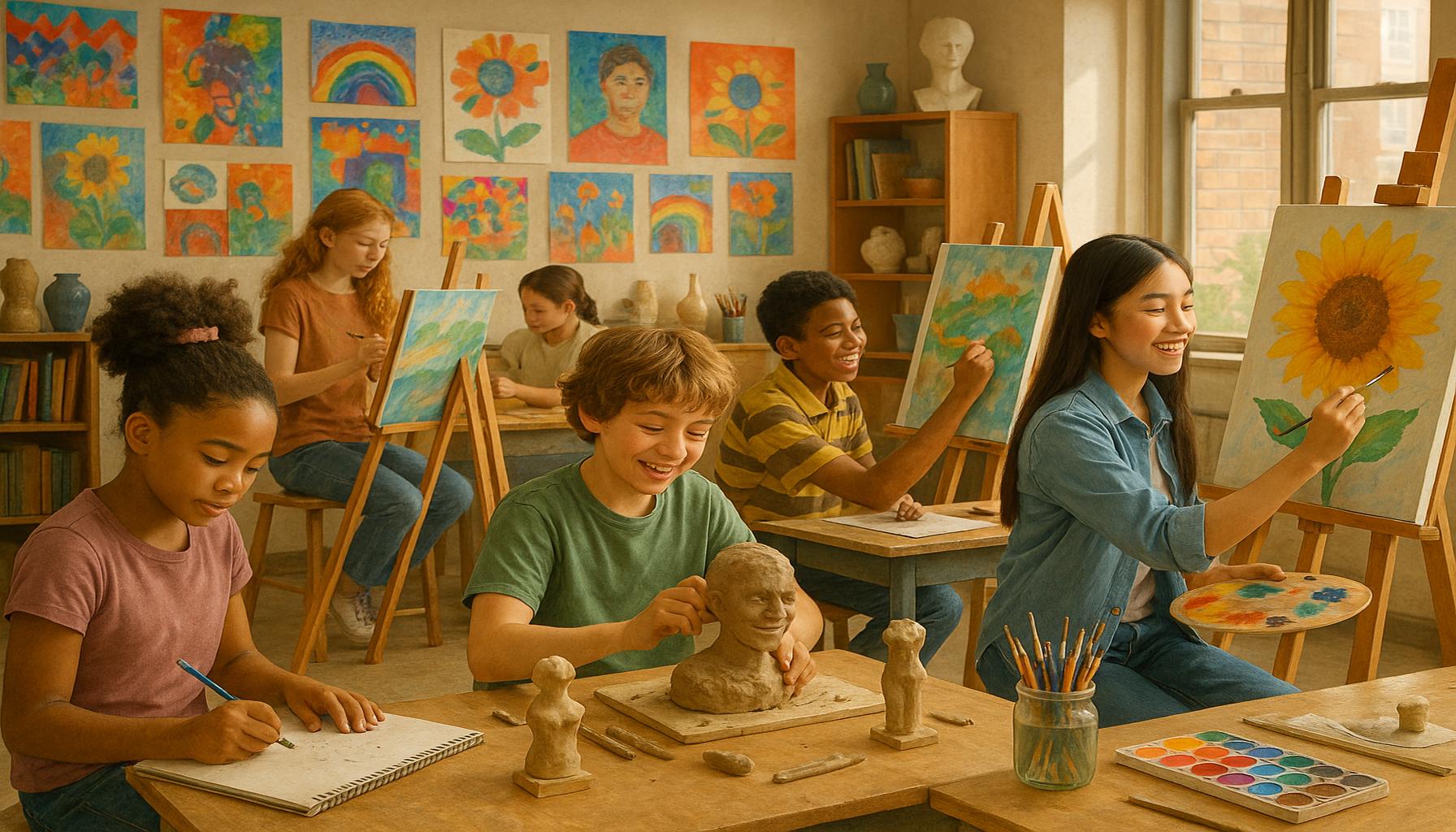
The Role of Art in Education
Art in education serves as a vital catalyst for enriching the overall teaching and learning experience. By integrating artistic elements into curricula, educators can foster creativity, critical thinking, and engagement among students. This shift towards an art-infused educational model invites a host of benefits that are hard to ignore. The incorporation of various artistic disciplines, including visual arts, music, and performing arts, can truly transform the educational landscape.
- Enhances Creativity: Students exposed to art develop original ideas and solutions. Artistic activities allow learners to express themselves freely; for instance, creating a mural can help a group brainstorm around a theme, leading to innovative displays of collective thought. According to research from the Arts Education Partnership, students who engage in arts-rich environments are more likely to think outside the box, thus honing their problem-solving skills.
- Improves Academic Performance: Art integration correlates with better grades and higher test scores. A study conducted by the National Endowment for the Arts revealed that students participating in arts education scored better on standardized tests compared to their peers with limited exposure to the arts. Subjects like math and science can be enhanced with art; for instance, using visual representations to explain complex concepts can foster a deeper understanding.
- Promotes Emotional Well-being: Engaging in artistic activities can reduce stress and increase self-esteem. In an age where mental health issues are increasingly prevalent among school-aged children, art provides a safe outlet for emotions. Programs like “Art for Healing” demonstrate how art therapy can assist students in coping with anxiety and depression, ultimately leading to better social interactions and improved classroom behavior.
From visual arts to music and drama, the possibilities are endless. Schools across the United States have started to recognize this potential, implementing programs that blend artistic expression with core subjects. For instance, the integration of music into language arts classes has been shown to facilitate better vocabulary retention in students. Not only does this approach aid memory retention and understanding, but it also prepares students for a rapidly evolving world where creativity and innovation are paramount.
As we delve deeper into the role of art in education, consider how different forms of artistry can transform traditional learning. Schools such as the Bronx School of Visual Arts in New York serve as shining examples where students engage in interdisciplinary projects that link art with social studies, thus providing a comprehensive learning experience. The inclusion of art can create dynamic classrooms that inspire learners to reach beyond textbooks, stimulating minds and encouraging innovation.
In summary, the integration of art into educational settings is not merely an enhancement but a necessity for a well-rounded curriculum. This transformative approach nurtures not only individual expression but also the collaborative spirit vital to preparing the next generation for the complexities of modern life. As stakeholders in education ponder the future of learning, exploring the rich tapestry of artistic possibilities could unlock new pathways to success.
DIVE DEEPER: Click here to discover the evolution of music
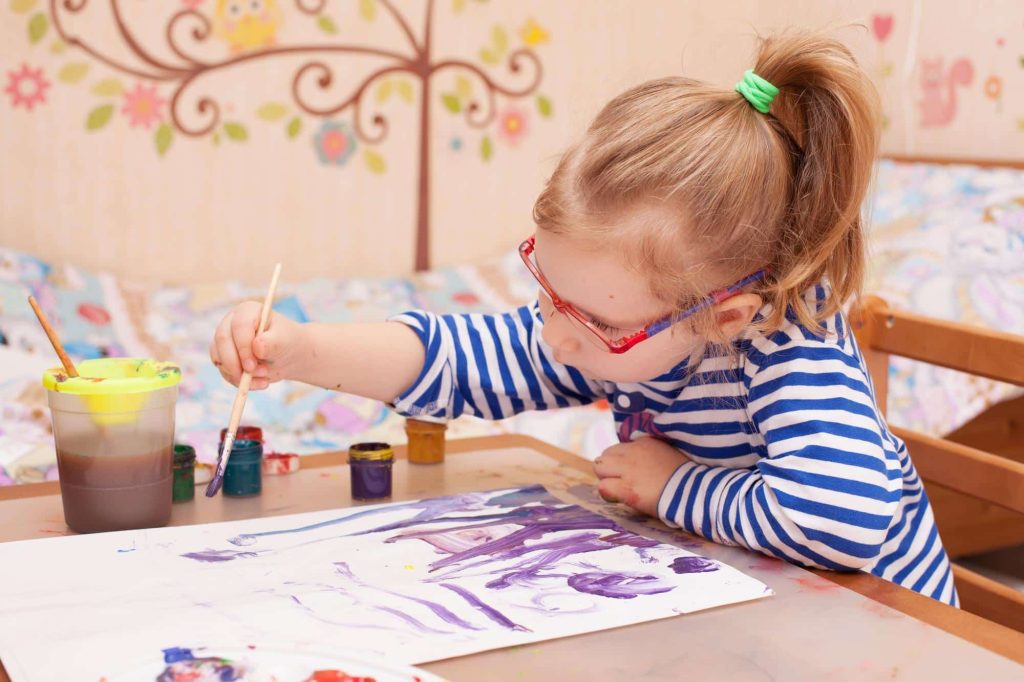
Unleashing Innovation Through Artistic Expression
The integration of art in education goes beyond simple aesthetic appreciation; it is a profound avenue for unlocking students’ innovative potential. Creative experiences encourage students to take risks and experiment with new ideas, allowing them to harness their imagination in meaningful ways. When students participate in artistic endeavors, they are more inclined to approach problems from unique perspectives and explore various solutions. This innovative thinking is critical in a world increasingly defined by technology and rapid change.
Artistic activities stimulate the brain’s right hemisphere, which is associated with creativity and intuition. Schools that emphasize the arts create a balanced educational environment where rigorous analytical thinking complements fluid creative exploration. Notably, integration of art with subjects like science can enhance understanding in both disciplines. For instance, the “STEAM” (Science, Technology, Engineering, Arts, Mathematics) movement is making waves across educational institutions by combining artistic creativity with scientific inquiry, resulting in engaging, hands-on learning experiences.
- Enhances Collaboration: Collaborative art projects foster teamwork and communication skills. Students learn to articulate their ideas openly and embrace diverse viewpoints. For example, a group performance in a drama class can teach participants to listen to one another and negotiate roles, which is invaluable in any workplace environment.
- Encourages Cultural Appreciation: Art education often includes exposure to various cultures, fostering an appreciation for diversity. Understanding art forms from different backgrounds helps create a sense of global citizenship among learners, preparing them to thrive in a multicultural society. Programs that focus on culturally relevant art encourage empathy and inclusiveness.
- Boosts Motor Skills: Engaging in artistic activities, particularly those involving drawing, painting, or dance, strengthens fine motor skills and hand-eye coordination. These skills are foundational not just for artistic endeavors but also for everyday tasks, thereby improving overall physical development.
Furthermore, art-integrated education is particularly impactful for students with different learning styles. Visual learners, for instance, grasp concepts more effectively when they can visualize information through drawings or diagrams. Kinesthetic learners benefit from hands-on activities that involve creating tangible artwork. Educators around the nation are increasingly aware of the importance of inclusivity in teaching approaches, and art provides a unique means to cater to diverse learning needs within a classroom.
Institutions like the Harlem School of the Arts in New York City exemplify successful art integration. Their programs are designed to enrich academic subjects by linking them to music, dance, and visual arts, resulting in a holistic educational framework that promotes cognitive, emotional, and social development. The arts do not merely supplement the core curriculum; they infuse energy into it, thereby transforming the way students engage with their education.
In conclusion, the role of art in education is not just an accessory; it is fundamental to cultivating a learning atmosphere where creativity and innovation thrive. By embracing artistic expression, educators can enrich the learning experience, equipping students with the skills necessary to navigate their futures with confidence and creativity. As education continues to evolve, understanding and integrating the multifaceted benefits of art can provide a clear path toward more effective and inspiring teaching methodologies.
The Interdisciplinary Benefits of Art in Education
The incorporation of art into education extends far beyond mere creativity; it fosters an interdisciplinary approach that connects various subjects. Research shows that including artistic practices in curricula can enhance students’ understanding of complex concepts in science, mathematics, and humanities by allowing them to express and visualize ideas differently. Art encourages students to think critically and engage with content on a deeper level, making learning more holistic.Moreover, art nurtures emotional and social skills. Through collaborative artistic projects, students learn to communicate effectively, solve problems, and build relationships. This environment fosters empathy and cultural awareness, preparing students for diverse social settings. Significantly, art education has been linked to improved emotional intelligence, which is crucial for personal and professional success.A myriad of studies suggests that students engaged in artistic endeavors tend to exhibit enhanced motivation and higher academic performance overall. They are more likely to participate actively in classroom discussions and less likely to drop out of school. Therefore, the role of art in education appears to be not only beneficial but also essential for developing well-rounded individuals capable of thriving in today’s world.
| Category 1 | Category 2 |
|---|---|
| Cognitive Development | Art enhances critical thinking and problem-solving skills. |
| Emotional Intelligence | Fosters empathy and social skills that are vital for collaboration. |
Art’s role in education is an expansive field ripe for exploration, as it intertwines with various aspects of student development and academic performance. Engaging with art not only cultivates individual creativity but also enriches the collective learning experience, making it a crucial element of contemporary education.
DIVE DEEPER: Click here to enhance your creative skills
Nurturing Emotional Intelligence Through Artistic Engagement
The role of art in education extends beyond academic enrichment; it serves as a vital conduit for the development of emotional intelligence among students. As learners immerse themselves in various art forms, they encounter a myriad of emotions which, in turn, helps them understand their feelings as well as those of others. This emotional resonance is particularly significant in a school environment where the ability to empathize, communicate effectively, and cultivate strong relationships plays an essential role in personal and academic success.
Through the exploration of themes in visual arts, literature, or performance, students engage in a deeper dialogue about their own experiences and the experiences of others. For instance, a high school drama class may tackle difficult subjects like bullying or loss, prompting students to step into the shoes of diverse characters, thereby enhancing their ability to connect on an emotional level. Such experiences can promote compassion and reduce stigma around social issues, fostering a more inclusive school climate.
- Empowers Self-Expression: Participating in artistic activities gives students a voice to express their thoughts and emotions in a constructive manner. Whether through painting, writing poetry, or creating music, students develop a sense of ownership over their artistic creations, which can build confidence and self-esteem. This empowerment is crucial, especially for adolescent students who may struggle with self-identity and acceptance.
- Reduces Stress and Anxiety: Engaging in art provides a therapeutic outlet for students, allowing them to channel their stress and anxiety into creativity. Research indicates that participation in art can lead to reduced cortisol levels, the hormone associated with stress. Schools that incorporate artistic practices into daily routines often see improvements in overall student well-being, as students find solace in creating and expressing themselves.
- Facilitates Critical Thinking: Artistic endeavors encourage students to consider not just what they create but also the ‘why’ behind their creations. This reflective aspect cultivates critical thinking skills as students analyze their artistic choices and the impact of their work on an audience. Such an analytical approach spans across disciplines, instilling a robust thinking framework that enhances academic performance.
Furthermore, art programs can also serve as a lifeline for students who may be struggling academically. For instance, after-school art clubs or community-based workshops offer a safe space for students to explore their artistic talents, often leading to increased motivation in their core subjects. According to the National Endowment for the Arts, students who engage in the arts consistently show higher levels of academic achievement compared to their peers. This correlation highlights the essential role of artistic engagement as a catalyst for improved academic performance across the board.
Programs like the Arts in Education Program, launched by organizations such as the John F. Kennedy Center for the Performing Arts, are promoting the convergence of arts-based learning strategies with standard curricula across the United States. By providing teachers with resources and professional development opportunities, these initiatives aim to infuse more artistic methodologies in classrooms, supporting educators in delivering engaging and effective lessons that resonate with students. The impact of such programs on student engagement and overall achievement is profound, reinforcing the necessity of a well-rounded educational approach that includes the arts.
In sum, engaging students in the arts is not merely supplementary, but rather an essential aspect of a comprehensive education that nurtures emotional, cognitive, and social development. As more educational institutions recognize the importance of art within the academic framework, the pathway to a holistic and enriching learning experience continues to expand, revealing the transformative power of artistic expression in shaping future generations.
DISCOVER MORE: Click here to delve into the evolution of digital art
Conclusion: Embracing the Future of Education Through Art
As we navigate the evolving landscape of education, the role of art emerges as a fundamental pillar that supports the development of well-rounded and engaged learners. From enhancing emotional intelligence to fostering critical thinking, artistic engagement not only enriches the academic experience but also prepares students to thrive in an increasingly complex world. The ability to express oneself creatively and empathize with diverse perspectives is invaluable in both personal and professional realms.
Furthermore, as research continues to underscore the connection between artistic engagement and academic success, it becomes imperative for schools to prioritize art in their curricula. Innovative programs like those from the John F. Kennedy Center for the Performing Arts serve as beacons of hope, illustrating how intentional integration of the arts can revitalize classrooms and elevate student achievement. By investing in comprehensive arts education, we can close the achievement gap while cultivating a generation of critical thinkers and compassionate individuals.
Ultimately, championing the arts in education is a call to action for educators, policymakers, and communities alike. The benefits of art extend far beyond the canvas or stage; they weave themselves into the fabric of societal progress. As we look to the future, let us embrace the transformative power of artistic expression, recognizing it as an essential tool that enriches teaching and learning, while simultaneously shaping a brighter, more inclusive future for all students.
